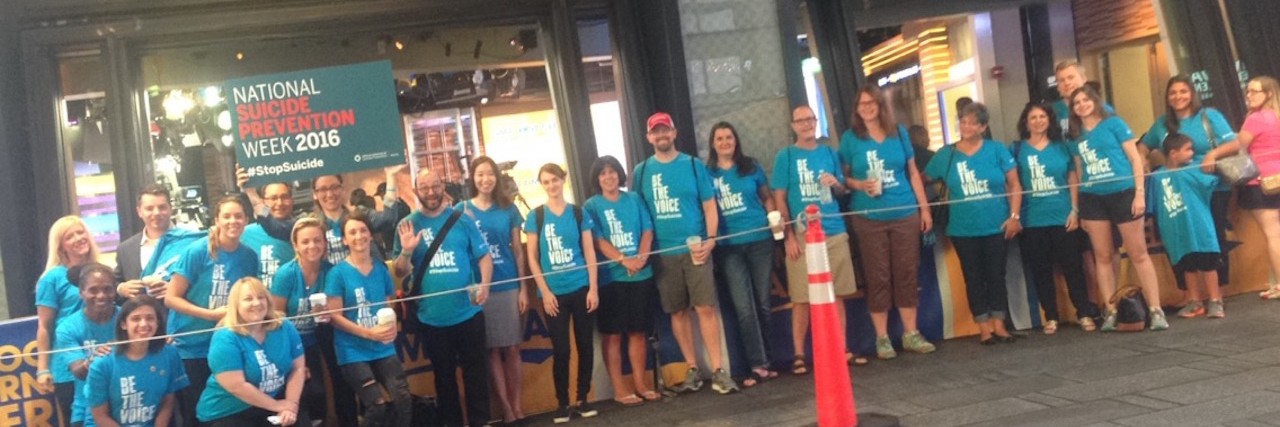During National Suicide Prevention Week, a large group of American Foundation for
Suicide Prevention employees and volunteers (including myself) had a rather disappointing experience as we stood outside the studios of “Good Morning America.”
“It’s the top of our morning show,” we were told as representatives of the show angled us out of the camera’s view. “We don’t want suicide on the brain.” If you haven’t read the incredible piece by our VP of Research yet, you should. This experience has given us the opportunity to create an important dialogue around the hashtag #SuicideOnTheBrain.
In 2006, I was a 13 year-old eighth grader when my classmate and friend Malaya died by suicide. Only three months after Malaya was gone, my fellow students and I graduated from middle school. As we approached the big day, our teachers rejected every mention of Malaya in the yearbook and the graduation proceedings. Dismayed and grieving, we took the microphone during the ceremony and demanded a moment of silence. At that point, it seemed like it was us vs. our teachers at a time when we should’ve come together. For years, I was angry with our teachers for denying us the memorial Malaya deserved.
But here’s the thing: it wasn’t their fault. They were terrified and experiencing their own grief because they hadn’t been prepared to deal with losing a student to suicide. More than a decade later, it isn’t GMA‘s fault either.
I remember before the topic of suicide ever entered my immediate reality, I said many insensitive things about mental health that I would never say now. I’ve heard the same from many of my colleagues and friends in the suicide prevention world. It takes personal experience — or hearing about it from others — to teach us how to talk about this serious subject.
The general public is not educated about suicide. I remember having health education in elementary school… but no one mentioned suicide until it was too late. We don’t always talk about mental health in the same way we do about physical health. Often, we don’t talk about mental health and suicide until something terrible has happened.
We need to tell more stories of hope and healing. People who haven’t been touched by suicide need to hear about our experiences and learn the warning signs and the resources available so they can save lives. They also need to learn the facts about suicide, so there can be a greater understanding of how widespread this issue is.
We need these stories because acting as though no one has #SuicideOnTheBrain makes those who are thinking about suicide and those who are grieving a suicide loss feel like they must be alone in this world. Suicide can be isolating. The truth is millions have #SuicideOnTheBrain, and if we come together we can change hearts and minds.
Standing in the rope line outside of “Good Morning America,” it was disappointing to be reminded that people still don’t understand how big an issue mental health is. But I have been excited to see how fired up people have gotten about it. Just a few years ago, we would’ve been resigned to the understanding that suicide is swept under the rug. Now that public opinion is undeniably changing, we are surprised and angered by this kind of silencing. Rather than pointing fingers, it feels good to use this as a teaching moment.
So let’s turn our anger into action and education. Use the hashtag #SuicideOnTheBrain to share your own story of hope, facts about suicide, and resources that are available to those who have been affected. Together, we can #StopSuicide!
If you or someone you know needs help, visit our suicide prevention resources page.
If you need support right now, call the Suicide Prevention Lifeline at 1-800-273-8255.

